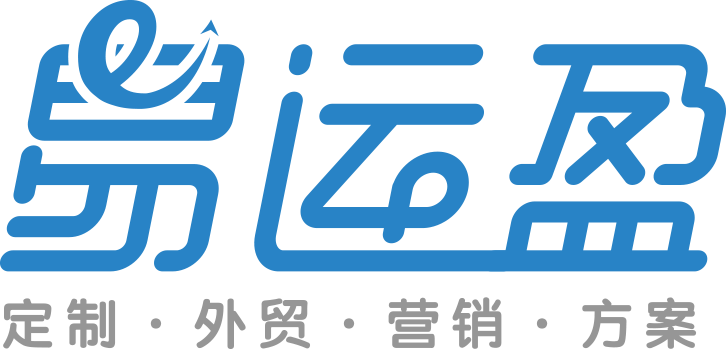In the world of energy storage, bidirectional inverters are emerging as one of the most important components, especially in the context of modern balcony energy storage systems. These inverters allow energy to flow in two directions, offering users unmatched flexibility, cost savings, and the ability to make the most of dynamic energy tariffs. For B2B customers, such as property developers, energy service providers, and building managers, understanding the role and advantages of bidirectional inverters is key to making informed decisions about energy storage investments.
In this in-depth article, we will explore the functionality, advantages, and applications of bidirectional inverters in balcony energy storage systems, and how they can help optimize energy usage, reduce costs, and even generate profit.
What is a Bidirectional Inverter?
A bidirectional inverter, as the name suggests, is a type of inverter that can operate in two directions. Traditional inverters in energy storage systems convert DC (direct current) electricity generated by solar panels into AC (alternating current) electricity, which can be used by household appliances or fed back into the grid. However, bidirectional inverters take things a step further by allowing energy to flow both ways—not just from solar panels to the home or grid, but also from the grid to the energy storage system.
How Does a Bidirectional Inverter Work?
A bidirectional inverter has two main functions:
- Converting DC to AC: This is the standard function of any inverter, enabling the use of energy generated by solar panels or batteries in your home or business. When your balcony energy storage system’s batteries are full, the inverter converts the stored DC energy into AC to power your appliances or feed excess energy back into the grid.
- Converting AC to DC: This is where the bidirectional functionality comes into play. When electricity prices are low, particularly during off-peak hours, the inverter allows you to charge your battery directly from the grid. This stored energy can then be used later when electricity prices rise, offering significant cost savings.

The Key Benefits of Bidirectional Inverters in Balcony Energy Storage Systems
The bidirectional inverter is a game-changer in modern energy storage systems, offering a range of benefits that make it particularly well-suited for urban environments and dynamic electricity markets, such as Germany’s.
1. Maximize Energy Flexibility
Perhaps the most significant advantage of a bidirectional inverter is the flexibility it provides in managing energy flows. Traditional energy storage systems are limited by the amount of energy available from solar panels. However, with a bidirectional inverter, users can:
- Charge batteries from the grid: In addition to storing solar energy, users can also store grid energy when electricity prices are low, such as during off-peak hours. This ensures that the battery has sufficient energy to power the home or business when electricity prices rise.
- Use stored energy during peak hours: During periods of high demand, when electricity rates are higher, users can draw on the stored energy in their batteries to reduce their reliance on the grid and avoid paying higher electricity bills.
This flexibility is particularly beneficial in countries like Germany, where electricity prices can fluctuate significantly throughout the day due to time-of-use (TOU) tariffs.
2. Optimize Energy Costs with Time-of-Use Tariffs
One of the standout features of bidirectional inverters is their ability to help users take advantage of time-of-use tariffs. In many regions, electricity prices vary depending on the time of day, with off-peak periods offering lower rates and peak periods charging higher prices.
With a bidirectional inverter, users can:
- Charge the battery during off-peak hours when electricity is cheapest.
- Discharge the battery during peak hours to avoid high electricity costs.
- Sell excess energy back to the grid during peak periods, potentially generating a profit.
This capability is ideal for businesses and homeowners looking to optimize their energy costs and make the most of fluctuating electricity prices.
3. Enhance Energy Independence
For users who want to reduce their reliance on the grid, a bidirectional inverter provides an excellent way to increase energy independence. By charging the battery from both the solar panels and the grid, users can ensure that their home or business has a reliable energy supply, even during peak demand periods or when solar generation is limited (e.g., during winter months or cloudy days).
This feature is particularly beneficial for businesses that require uninterrupted power or for households that want to avoid the inconvenience of power outages.
4. Support for Grid Stabilization and Profit Generation
In addition to reducing energy costs, bidirectional inverters offer the potential for users to generate income by selling excess energy back to the grid. In countries with net metering or feed-in tariffs, users can sell the electricity stored in their batteries during high-demand periods when prices are at their peak.
This not only helps to stabilize the grid by providing additional energy during peak periods but also offers a way for businesses and households to monetize their energy storage systems.
5. Future-Proofing for Smart Grids
As electricity grids become more intelligent and decentralized, bidirectional inverters will play a critical role in the development of smart grids. These inverters allow for two-way communication between the grid and the energy storage system, enabling:
- Demand response management: Energy storage systems can respond to signals from the grid to either store energy or release energy during high-demand periods.
- Energy trading: In the future, bidirectional inverters could enable peer-to-peer energy trading, allowing users to buy and sell energy directly with their neighbors.
This makes bidirectional inverters a future-proof investment for businesses and homeowners looking to stay ahead of the curve in the rapidly evolving energy market.
How Bidirectional Inverters Work in Different Use Cases
To better understand the versatility of bidirectional inverters, let’s explore a few common use cases and how these inverters can optimize energy usage and cost savings.
1. Residential Use Case: Managing Energy Costs in an Urban Apartment
Imagine a family living in a German apartment with a balcony energy storage system. The family uses a bidirectional inverter to manage their energy usage as follows:
- During the day, their solar panels generate electricity, which is stored in their battery using the inverter.
- At night, when solar generation is no longer possible, they use the stored energy to power their home.
- During off-peak hours (late at night), they charge the battery from the grid at lower electricity rates.
- During peak hours (in the morning or evening), they use the stored energy, reducing their reliance on the grid and avoiding high electricity prices.
This simple strategy allows the family to save significantly on their electricity bill while ensuring they have a reliable energy supply throughout the day.
2. Commercial Use Case: Optimizing Energy for a Small Business
For small businesses, energy costs can represent a significant portion of operational expenses. A bidirectional inverter can help businesses manage these costs more effectively by:
- Storing excess solar energy during the day when the business is closed or energy demand is low.
- Using stored energy during peak operating hours when electricity costs are higher.
- Charging the battery during off-peak hours to ensure a steady energy supply during business hours.
By implementing a bidirectional inverter, the business can reduce its electricity costs and increase energy efficiency without compromising on operations.
3. Backup Power Use Case: Ensuring Energy Security
In areas prone to power outages or for businesses that require uninterrupted power, a bidirectional inverter can offer a reliable backup power solution. By storing energy from both the solar panels and the grid, the system ensures that the battery is always charged and ready to provide power during outages.
This ensures energy security and minimizes the risk of downtime for businesses that rely on continuous power for critical operations.
Bidirectional Inverter vs. Traditional Inverter: A Comparative Overview
To better understand the unique value of bidirectional inverters, let’s compare them to traditional inverters across several key metrics:
| Feature | Bidirectional Inverter | Traditional Inverter |
|---|---|---|
| Energy Flow | Two-way (can charge from both solar panels and grid) | One-way (only converts DC from solar to AC for use) |
| Cost Savings | Optimizes energy costs through peak/off-peak management | Limited to solar energy, no grid interaction |
| Backup Power | Can store grid energy for use during outages | Limited to solar energy storage |
| Grid Interaction | Can sell excess energy back to the grid | Limited or no interaction with the grid |
| Future-Proofing | Compatible with smart grids and demand response systems | Less adaptable to future grid innovations |
As the table shows, bidirectional inverters offer significantly more flexibility and cost-saving opportunities than traditional inverters, making them the superior choice for businesses and homeowners alike.
Optimizing Your Balcony Energy Storage System with a Bidirectional Inverter
Now that we understand the key advantages and capabilities of bidirectional inverters, let’s explore how to optimize your balcony energy storage system to take full advantage of this technology.
1. Choose the Right Battery Capacity
When using a bidirectional inverter, it’s important to select a battery with enough capacity to store energy from both your solar panels and the grid. This will ensure that you have sufficient energy to power your home or business during peak hours and maximize your cost savings.
2. Monitor Time-of-Use Tariffs
To make the most of your bidirectional inverter, keep an eye on your local time-of-use tariffs. By understanding when electricity prices are at their lowest, you can optimize your energy storage and avoid drawing power from the grid during expensive peak periods.
3. Automate Energy Flows
Many modern balcony energy storage systems come with smart energy management software that allows you to automate energy flows. This software can be programmed to automatically charge your battery from the grid during off-peak hours and discharge during peak hours, ensuring maximum cost savings without requiring manual intervention.
4. Consider Future Expansion
Bidirectional inverters are a scalable solution, meaning that you can easily expand your system by adding more solar panels or battery capacity as your energy needs grow. This makes them an ideal choice for businesses or homeowners who want to future-proof their energy storage system.

Conclusion
In conclusion, bidirectional inverters are a revolutionary technology that significantly enhances the functionality of balcony energy storage systems. By allowing energy to flow in two directions—both from solar panels and the grid—these inverters offer users unparalleled flexibility, cost savings, and the ability to take full advantage of time-of-use tariffs.
For businesses and homeowners alike, investing in a bidirectional inverter can lead to substantial energy cost reductions, improved energy independence, and even the potential for profit generation by selling excess energy back to the grid. As the energy market continues to evolve, bidirectional inverters will play a critical role in shaping the future of energy storage and smart grid systems, making them an essential component for anyone looking to stay ahead of the curve.
By integrating a bidirectional inverter into your balcony energy storage system, you can unlock the full potential of your energy storage investment, ensuring long-term savings and sustainability.





